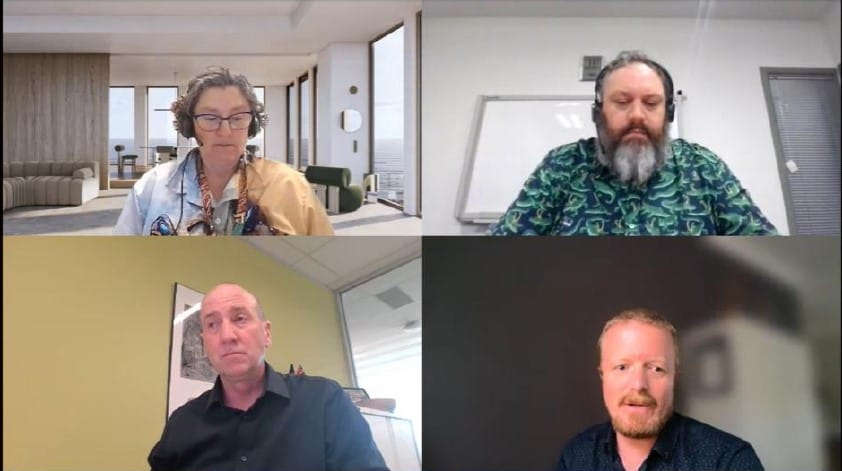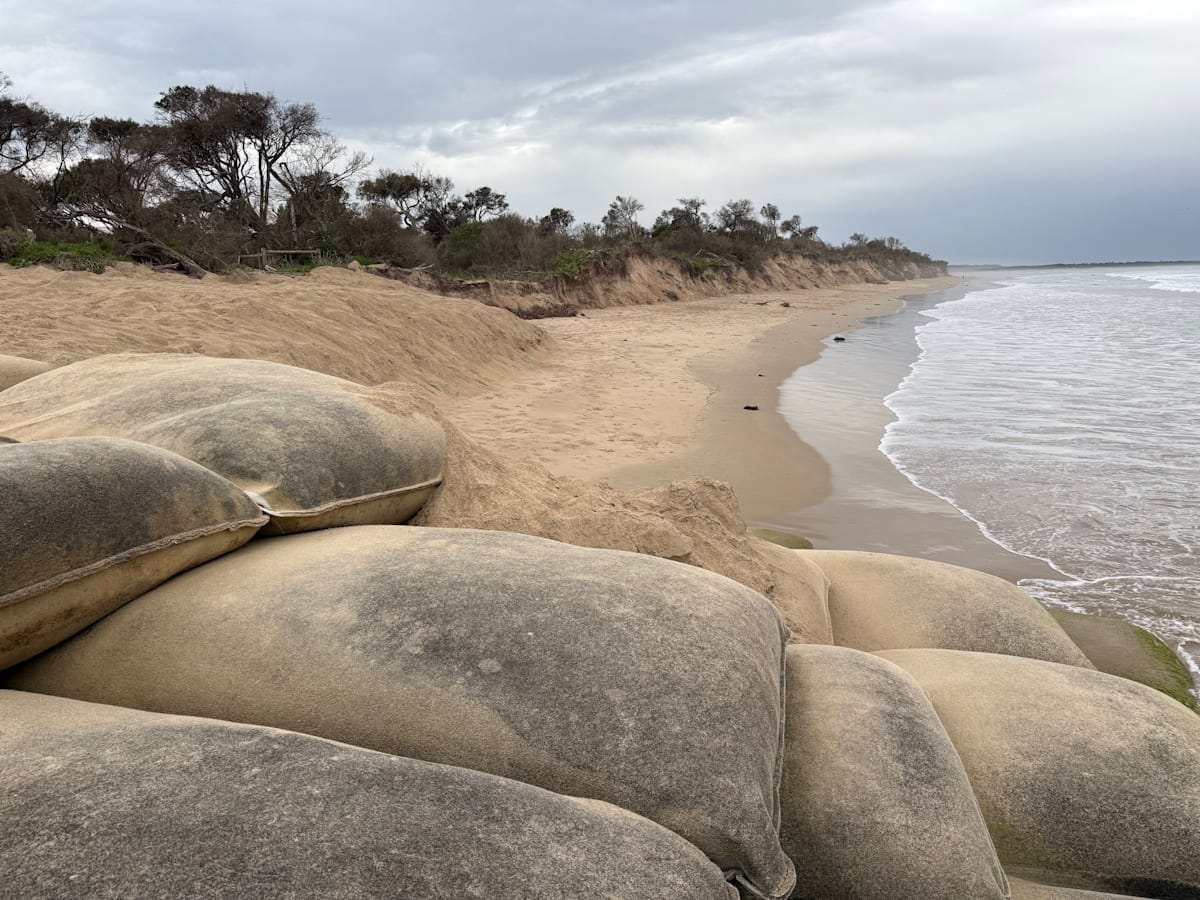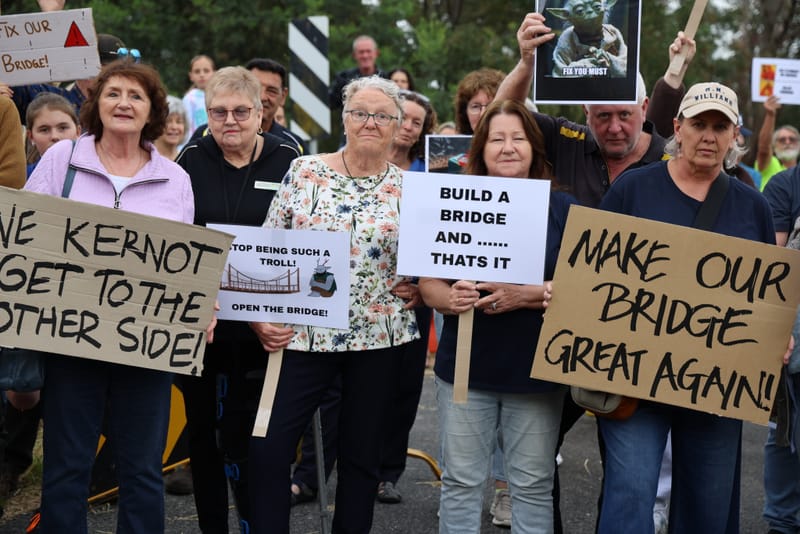DEECA backs off on ‘retreat’ rhetoric in response to Inverloch erosion
IT WAS less about retreat and more about protection as the Department of Environment, Land, Water & Planning (DEECA) and the Cape-to-Cape Resilience Project team continued to soften their language around the response to Inverloch’s erosion...

IT WAS less about retreat and more about protection as the Department of Energy, Environment and Climate Action (DEECA) and the Cape-to-Cape Resilience Project team continued to soften their language around the response to Inverloch’s erosion problems at an online seminar last Thursday night, October 16.
One of the 30 questions put to the panel during a probing Q&A which followed the Inverloch Dune Reconstruction Works Information Session directly addressed the emotive issue of retreat, that is, a planned fallback from at risk coastal areas.
“We've got a question about retreat, and we're going to bring Caz (Cassandra Philippou) in to answer that one for the team. And what does that actually mean in this context for Inverloch?
Cassandra Philippou (Project Manager DEECA, Cape to Cape Resilience Project): Thanks. Jules, look, I know that retreat has been something that has popped up fairly frequently during the project and for the resilience plan as well. Retreat is really a process of managed land use transition. It doesn't happen instantly. It's something that takes place over a long period of time and is planned.
“And the idea is that we need to change the way we use places and land so that we can put more appropriate uses in those places that are less vulnerable to some of those coastal hazards.
“So, the managed transition in the adaptation pathway for the Surf Beach is really to be activated in the medium to long term. So, we're not talking tomorrow. We're not talking in five years’ time. It's really looking at having that transition really moving along by about 2070 or the 0.5 sea level rise scenario.
“But of course, that is still subject to how the beach is managed all the way up until that period of time.”
Ms Philippou went on to say the Cape-to-Cape Resilience Project team had received Commonwealth Disaster Ready funding to develop their Inverloch retreat work further as wider research but it didn’t mean anyone would see anything locally in the short term.
“So, it's a long-term process. It certainly doesn't mean that you're going to be affected, or anyone will be affected in the very short term, but it is something that we need to look at, how that land will be managed and used in the future.”
Darrin McKenzie, Gippsland Regional Director Department of Energy, Environment and Climate Action ((DEECA) added his thoughts, also saying that while initial community consultation in early 2021 (based on 180 surveys, 38% from Inverloch residents) provided the basis for the strategy, he was open to the idea of re-assessing community desires and goals in the future.
“What Caz has said is right, there’s work happening in government to try and understand what the implementation of a retreat policy would look like and this comes back to comments I was making about community values, and it has to be a community driven plan.
“When we put the first draft out for consultation, we got quite a bit of feedback from members of community saying it was too focused on retreat. That there was some ideological position in government that that's the pathway we wanted to go down. That's certainly not the case.
“There's no position within government, that retreat is the pathway that we need to adopt here to move these assets out of the hazard zone and things like that. So, we have responded to that feedback, and once the final plan comes out, you'll see in there, the community will see that we've introduced an additional pathway that does provide a greater emphasis, or opportunities for protect type outcomes into the future.
“So, we can look at some of those more protection type adaptation options into the future that would look to protect assets that sit behind the dunes.
“That's not to say that the work we've been talking about today, in terms of the dune reconstruction and renourishment, is not a protection pathway for us. We are looking to protect the dunes and ultimately protect the assets that sit on that coastal zone.
“It is a nature based, or a natural based protection pathway or action for us. So, we're looking to try and use that. The things we were talking about before, you know, some of those harder infrastructure things could put at risk the very values that we are trying to protect, which is the beach and continued access to the beach.
“So, it is a protection pathway that we're proposing here. It's not hard infrastructure in terms of a sea wall or anything like that, I acknowledge, but I can assure you, there's no position within government that let's just retreat and move everyone out of the way.”
It’s pretty important stuff for those with houses and facilities, like the Inverloch Surf Lifesaving Club, sitting behind the dunes while storm surges are driving king tides and big waves into the fragile shoreline.
Bass Coast Shire Councillor Cr Meg Edwards, who watched the seminar with a house full of people last Thursday evening, said she felt community action had moved the needle from talk about retreat to protection which was heartening.
“Honestly, I think that just basing your response on 180 submissions when 2500 people signed a petition, 700 attended a beach rally and 350 at a town hall meeting, calling for greater protection, does indicate a wider spread of opinion,” said Cr Edwards.
“The word ‘protect’ came up a lot more and there was also the offer to go back and test community sentiment again.
“What was also interesting is that the limits being placed on the amount of sand they’re prepared to move and dunes they’re prepared to reinstate is based more on the limits to the funding rather than what’s needed to do the job.
“If it’s actually going to cost $10 million to complete the work, the government should look at the economic and social benefits and fund it upfront.”
Cr Edwards said she was also concerned the sand dredging and dune reinstatement works would be carried out in the period between February and Easter, still a busy time on the beach at Inverloch.
“It is what it is now, but I thought they should have stuck with the plan to do it now, between October and December and have it ready for the revegetation works to begin.”
President of the Inverloch Surf Life Saving Club, Glenn Arnold, was also pleased to hear the commitments being made to protecting rather than retreating.
“We’re pleased to hear that they’re going to go ahead and extend the sand-bag wall (east and west of its present position) and that they’re going to get that work done before Christmas,” said Mr Arnold.
“And that the sand dredging and dune reinstatement work will commence in February, followed by the revegetation works.”
Mr Arnold said he also raised the potential of using jute mesh, made from natural products or Coir mesh made from coconut husk fibres, to protect the dunes and assist in the revegetation process as a possible solution.
“At the end of the day, they haven’t deviated a great deal from their plan but it’s less about retreat and more about protection, and we welcome that, and they also appear open to discussing other strategies,” he said.
The geotextile bag wall in front of the Inverloch Surf Lifesaving Club is due to be extended east and west before Christmas, and the movement of 100,000 cubic metres of sand, from Anderson Inlet to the surf beach is set to start in February, after the busy summer holiday season with revegetation to follow.
The South Gippsland Conservation Society has had a strong hand in the type of plants that will be used in the revegetation works.
Among those who presented at the online seminar were:
- Darrin McKenzie, Gippsland Regional Director Department of Environment, Land, Water & Planning
- Elise Lawry, Coastal Engineer at Water Technology Pty Ltd
- Simon Woodland, Manager Sustainable Environment at Bass Coast Shire Council
- Jeremy Neilson, Coastcare Facilitator at Department of Sustainability and Environment
More to follow.






